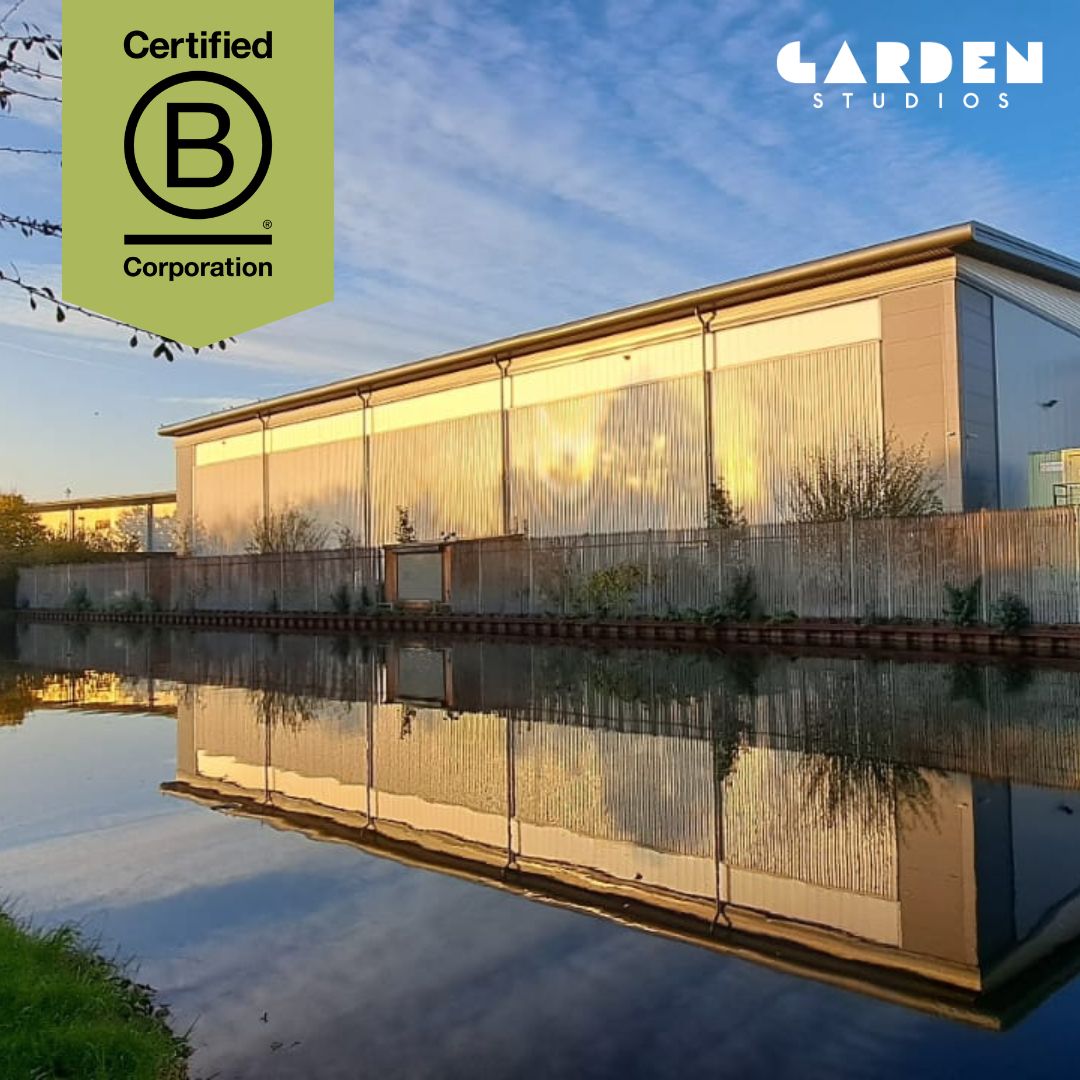

Garden Studios

London Borough of Brent, United Kingdom
August 2023
Film, TV & music production
Service with Significant Environmental Footprint
United Kingdom
Garden Studios was established in February 2021 and is the largest-scale film studio in central London with a total footprint of 300,173 sq. ft. We house seven sound stages totalling just over 80,000 sq. ft., with the largest offering at 23,414 sq. ft, additional sound-treated stages, a permanent virtual production stage of 3186 sq. ft, with a 12 x 4m LED volume, extendable to 20m x 5m. Supporting spaces include production offices, workshops, green rooms, costume, and hair & makeup rooms, private meeting pods that overlook our canalside, and parking. Garden Studios was built with our values deeply embedded in the fabric of our studio. We prioritise sustainability, inclusivity, education, innovation, and accessibility. We’re still on a journey to reach all our sustainability goals but are proud to be part of the B Corp movement certification and that we’re taking part in the Albert Studio Sustainability Standard, BAFTA’s film studio sustainability certification. Being a positive force in our local community is important to us and we try to achieve that through educational programs, internships, a local artist-in-residence initiative, free use of studio space for local young talent, and The Hive, a shared workspace for local artists and makers which offers podcast, vodcast, and
Overall B Impact Score
Governance 17.1
Governance evaluates a company's overall mission, engagement around its social/environmental impact, ethics, and transparency. This section also evaluates the ability of a company to protect their mission and formally consider stakeholders in decision making through their corporate structure (e.g. benefit corporation) or corporate governing documents.
What is this? A company with an Impact Business Model is intentionally designed to create a specific positive outcome for one of its stakeholders - such as workers, community, environment, or customers.
Workers 32.3
Workers evaluates a company’s contributions to its employees’ financial security, health & safety, wellness, career development, and engagement & satisfaction. In addition, this section recognizes business models designed to benefit workers, such as companies that are at least 40% owned by non-executive employees and those that have workforce development programs to support individuals with barriers to employment.
What is this? A company with an Impact Business Model is intentionally designed to create a specific positive outcome for one of its stakeholders - such as workers, community, environment, or customers.
Community 18.8
Community evaluates a company’s engagement with and impact on the communities in which it operates, hires from, and sources from. Topics include diversity, equity & inclusion, economic impact, civic engagement, charitable giving, and supply chain management. In addition, this section recognizes business models that are designed to address specific community-oriented problems, such as poverty alleviation through fair trade sourcing or distribution via microenterprises, producer cooperative models, locally focused economic development, and formal charitable giving commitments.
Environment 18.1
Environment evaluates a company’s overall environmental management practices as well as its impact on the air, climate, water, land, and biodiversity. This includes the direct impact of a company’s operations and, when applicable its supply chain and distribution channels. This section also recognizes companies with environmentally innovative production processes and those that sell products or services that have a positive environmental impact. Some examples might include products and services that create renewable energy, reduce consumption or waste, conserve land or wildlife, provide less toxic alternatives to the market, or educate people about environmental problems.
Customers 1.6
Customers evaluates a company’s stewardship of its customers through the quality of its products and services, ethical marketing, data privacy and security, and feedback channels. In addition, this section recognizes products or services that are designed to address a particular social problem for or through its customers, such as health or educational products, arts & media products, serving underserved customers/clients, and services that improve the social impact of other businesses or organizations.